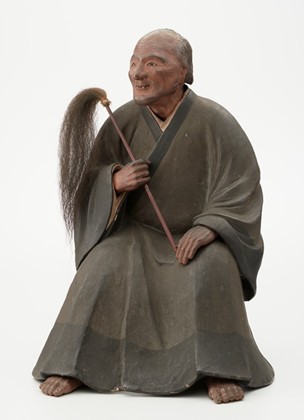
Osaka City Museum of Fine Arts Featured Exhibition: “From Baisao to Kagetsuan ̶The Birthplace of the Sencha Tea Ceremony !“
In the 17th century, the method of brewing tea using leaf tea from China’s Ming Dynasty spread to Japan, giving rise to the popularity of “sencha.” Later, the monk Baisao (1675–1763 , literally “Tea-Selling Old Man”) sold tea while traveling through Kyoto, spreading the original teachings of Zen. Influenced by him, literati embraced sencha as a means to cultivate the spirit. Initially, there were no formal rituals for sencha, but as it became widespread, it was systematized as “senchado (the “Way of Sencha”), with established rules and styles for brewing methods and utensils. Tracing literary records reveals that Tanaka Kakuo (1782–1848), founder of the Kagetsuan school in Osaka, established, was the first to establish sencha as an art form among literati, becoming its first recognized “headmaster.”

The current special exhibition “From Baisao to Kagetsuan: The Birthplace of the Sencha Tea Ceremony !” at the Osaka City Museum of Fine Arts introduces the spiritual culture of sencha tea originating with Baisao and the journey of the Kagetsuan school, which inherited this tradition and established senchadō. The exhibition features sencha utensils and calligraphy/paintings passed down by Kagetsuan, allowing visitors to experience the origins of Osaka’s proud sencha tradition and its cultural expansion. Osaka City Museum of Fine Arts Curator Sugitani Kayoko Thumbnail: Nanban-style Teapot by Aoki Mokubei (1767-1833) Edo period, 1829 private collection One of a pair, this teapot bears the inscription “For Kagetsuan, Tea Master,” indicating Mokubei crafted it for Kagetsuan. Portrait of Baisao First-generation Takahashi Dōhachi (1740–1804) Edo period, 1798 private collection At Kagetsuan, on the 16th of each month (the anniversary of the Baisao’s death) this statue of Baisao was displayed, and a ceremony of serving tea to the people was held.